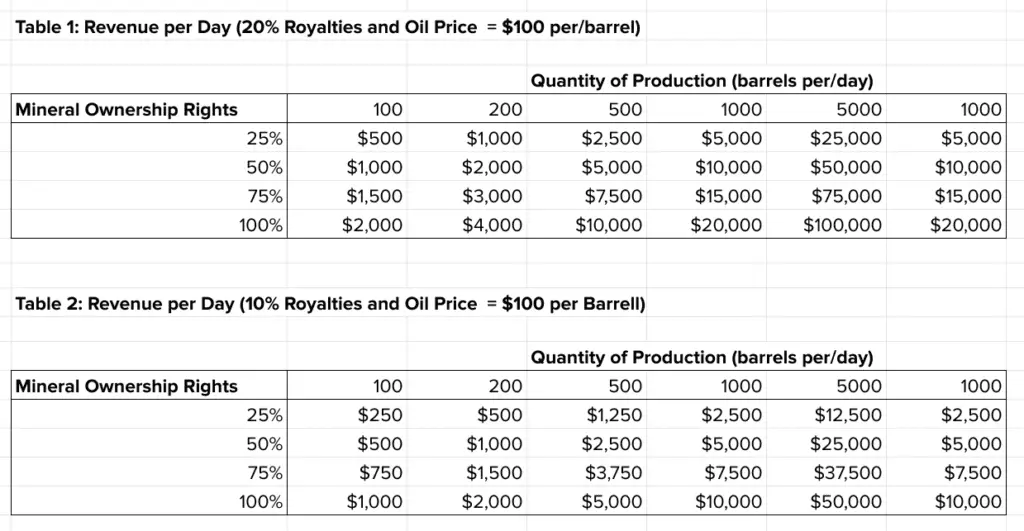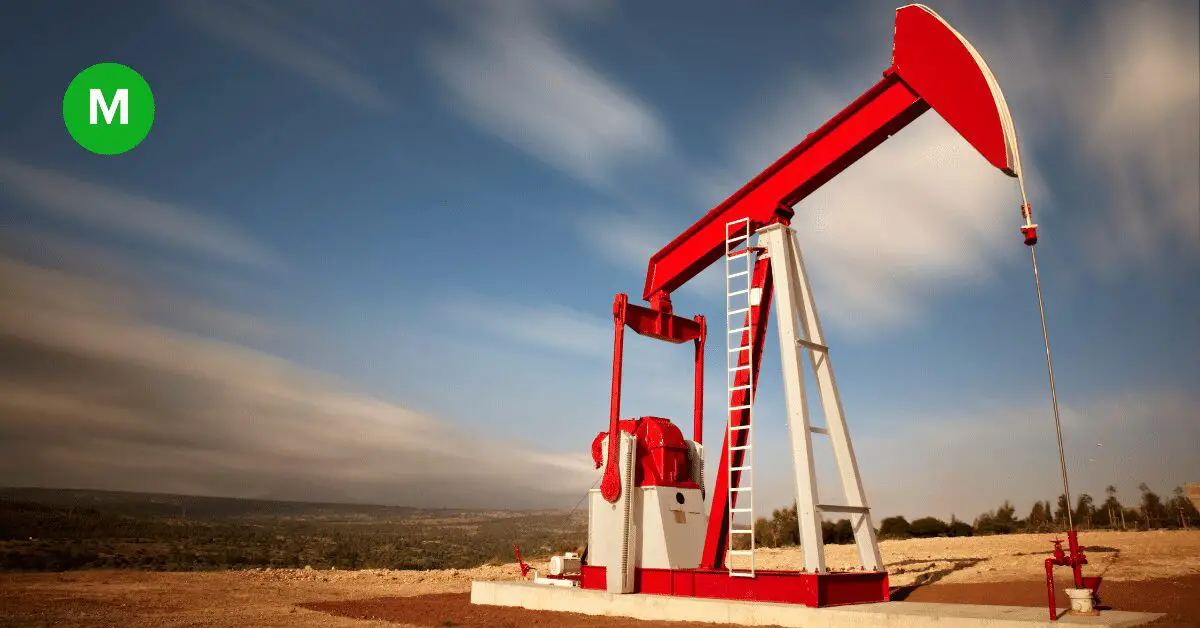How Much Money Can You Make From an Oil Well?
We all dream of being the next Jed Clampett. But what happens if you strike oil in your backyard? How much money can you expect to make from that oil well, and will it be enough to pack up the family and move to Beverly, Hills that is?
Key Points
- There is no such thing as a typical oil well — every well is unique. Production rates from a single well can vary from fewer than 100 barrels per day for smaller onshore wells to more than 50,000 barrels per day for large offshore platforms.
- The average oil well in the United States produces about 100 barrels of oil per day. Assuming the mineral rights are 100% owned, a negotiated 20% of the royalties, and $100 per barrel oil price (July 2022) you as the land and mineral rights owner can expect to earn around $2,000 per day.
- Note that although some oil wells start producing immediately, others can take months or even years to get to full production.
Drilling for oil can be profitable, but it is also a risky venture for the oil company, though a calculated one. There is no guarantee that a well will produce oil, and the cost of drilling and operating a well can be high. In addition, oil prices can be volatile and fluctuate wildly — the price of oil at the time a well is drilled may not be the same when it comes time to sell that oil.
This article looks at the key factors determining how much money the land and mineral rights owner can make from an oil well.
Keys factors that determine how much money you make from an oil well
Every project will be different since no two oil wells are alike. However, there are some common factors when an oil company (or the Government) is looking for and assessing new land to drill wells:
- Size of the land available for drilling
- History (ownership and legal rights)
- Estimated number and size of oil reserves
If your land meets their criteria, a contract will be drawn up, and negotiation can begin to compensate you for a portion of the minerals extracted and sold from your oil well.
How much the oil company pays you to drill on your land will be determined by three primary factors:
- Percentage ownership of the mineral rights ownership
- Royalty percentage as defined in the Lease Agreement
- The price of oil (as determined by supply and demand factors)
Percentage of mineral rights ownership
First, you need to know how much of the minerals rights you own.
The U.S. government owns some minerals rights, but most of the minerals rights are privately owned.
The U.S. government owns about 640 million acres of mineral rights, about 28% of the total mineral rights in the United States. The rest are privately owned.3
You are said to be the mineral rights owner if you own the mineral rights.
If you own the surface rights, but someone else owns the minerals rights, then you are the surface owner. The surface owner is the person who owns the land. The mineral rights owner is the person who owns the minerals beneath the surface of the land.
The percentage of mineral rights ownership will determine how much money you make from the oil well. If you own 100% of the mineral rights, then you will make more money than if you only own 50% of the mineral rights.
Royalty percentage as defined in the Lease Agreement
The royalty percentage is the percentage of the minerals you will receive from the oil well. The royalty percentage is typically between 12.5% and 20%.
The royalty percentage is negotiable.
It is important to negotiate a high royalty percentage because it will determine how much money you make from the oil well.
The price of oil (supply and demand)
Oil prices are measured in dollars per barrel and can fluctuate dramatically.
Recently, within a year, the price has been as low as $10 per barrel and as high as $140 per barrel. The market price of oil is determined by the supply and demand for oil, and the market’s future expectations around those supply and demand factors.
In 2021, approximately 3.21 billion barrels of finished motor gasoline were consumed in the United States, an average of about 8.80 million barrels per day. This was around 6% less than the record high level of consumption of nearly 9.33 million gallons per day in 2018.4
The volume of oil a well can produce
An oil well can produce a few barrels of oil per day or a few thousand barrels per day.
The average oil well in the United States produces about 100 barrels daily.
So how much can you expect to make from a single oil well?
Assuming the well is in full production the following tables detail top-line revenue estimates for different percentage mineral rights ownership and royalty levels.


How long does it take for an oil well to produce?
An oil well’s drilling and production process starts with the initial drilling or spudding. Once an oil well is drilled, the well must be completed before production starts.
The completion process involves casing, cementing, perforating, hydraulic fracturing, and other procedures. Some oil wells are completed shortly after drilling is completed, but other wells remain drilled but uncompleted for several months or years.
Bottomline
The amount of money you can make from an oil well depends on several factors, including the size of the land available for drilling, the estimated size of the oil reserves, the price of oil, and the percentage of mineral rights ownership.
With the average oil well in the United States producing about 100 barrels of oil per day, assuming the mineral rights are 100% owned, 20% royalties, and $100 per barrel, the owner can expect revenue of around $2,000 per day.
SOURCES
- US Oil and Gas Wells by Production Rate – EIA.” https://www.eia.gov/petroleum/wells/
- “Crude Oil Prices Today | OilPrice.com.” https://oilprice.com/
- Federal Land Ownership: Overview and Data – FAS Project on ….” 21 Feb. 2020, https://sgp.fas.org/crs/misc/R42346.pdf.
- Frequently Asked Questions (FAQs) – U.S. Energy Information … – EIA.” 15 Mar. 2022, https://www.eia.gov/tools/faqs/faq.php?id=23&t=10. Accessed 21 Jun. 2022.
- U.S. Energy Information Administration – EIA – EIA.” https://www.eia.gov/todayinenergy/detail.php?id=41253







